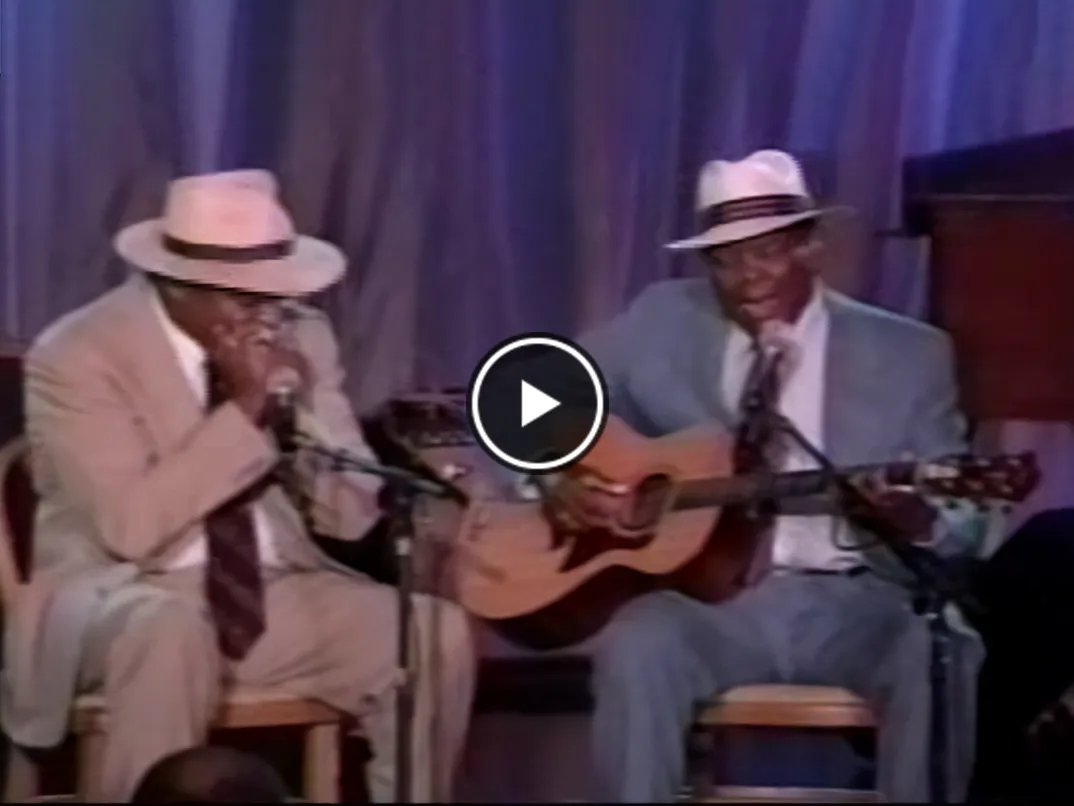If you have problems playing the video, check the source link at the end of the article.
Cephas & Wiggins: The Dynamic Duo of Piedmont Blues
In the world of blues music, various regional styles have emerged over the years, each with its unique characteristics and legends. Among these, the Piedmont blues, originating from the Southeastern United States, holds a special place. Its most celebrated ambassadors, without a doubt, are the dynamic duo of John Cephas and Phil Wiggins.
The Roots of Piedmont Blues
To appreciate the significance of Cephas & Wiggins in the blues world, one must first understand the nature of Piedmont blues. This style is distinct from the more commonly known Delta blues. It’s characterized by a unique fingerpicking guitar technique, drawing on ragtime, country, and traditional folk influences, creating a sound that is both complex and rhythmically rich.
John Cephas: The Guitar Maestro
John Cephas, born in 1930 in Washington D.C., was not just a musician but a storyteller and historian through his music. His guitar playing was deeply rooted in the Piedmont style, which he learned from his relatives in Virginia. Cephas’s playing was marked by its melodic precision and an almost conversational quality, as if each note was part of a larger narrative.
Phil Wiggins: The Harmonica Virtuoso
Phil Wiggins, born in 1954, brought a different but complementary background to the duo. His harmonica playing was self-taught and heavily influenced by the blues he heard growing up in Washington D.C. Wiggins’s style was fluid and expressive, perfectly interweaving with Cephas’s guitar lines, adding depth and emotion to their music.
Together as Cephas & Wiggins
The pairing of Cephas and Wiggins in 1977 was a milestone in the history of blues music. Their collaboration was not just a meeting of two musicians but a fusion of traditions, stories, and skills that revitalized the Piedmont blues style. They were known for their ability to connect with audiences, blending humor, storytelling, and musical mastery in their performances.
Legacy and Influence
The duo’s impact on the blues and folk music scenes was profound. They recorded numerous albums, toured extensively in the U.S. and abroad, and received numerous accolades, including the prestigious National Heritage Fellowship. More importantly, they kept the Piedmont blues tradition alive, inspiring a new generation of musicians.
Conclusion
Cephas & Wiggins were not just musicians; they were cultural ambassadors, bridging generations and geographies through their art. Their contribution to the Piedmont blues genre has left an indelible mark, ensuring that this unique American music tradition continues to thrive and inspire. In their hands, the Piedmont blues was not just a genre of music; it was a living narrative of American history and culture.
Video source: https://www.youtube.com/watch?v=4Bd-u7vZoi0

Thank you
We appreciate your time and dedication to reading our article. For more of the finest blues guitar music, make sure to follow our Facebook page, “I Love Blues Guitar”. We share exceptional selections every day. Thank you once again for your continued support and readership.


Facebook Comments